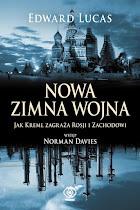Swimming pools
At the deep end
May 10th 2007
From The Economist print edition
Contested Waters: A Social History of Swimming Pools in America
By Jeff Wiltse
University of North Carolina Press; 276 pages; $29.95 and £18.50
FROM cleanliness to sociability to athleticism, swimming baths are a symbol of life in America. Jeff Wiltse unpicks a story that begins in an age when the main reason for public pools was to let poor people get clean. In the days before chlorination that created problems: a swimming pool in New York's Central Park would attract “all sorts of undesirable people”, said the parks commissioner. If it was “used by all classes” said the New York Times in 1910, “it will become foul in a very short time”.
Public swimming pools soon became a touchstone of municipal social reform. But two other kinds of prejudice took over. The first was against the mixing of lightly clad men and women, which could encourage lewdness and promiscuity. That gradually eroded. By the mid-1930s, “bathing costumes” designed to conceal curves and bulges were giving way to “swimsuits” designed for practicality or even, excitingly, to showcase the body.
But as sexual taboos were breaking down, another set was growing, conflating prudishness, paranoia and straight racism. The book starts with a poignant story from 1951 of a victorious children's baseball team that wanted to celebrate by swimming at a municipal pool in Youngstown, Ohio. But one team member, Al Bright, was black. Initially the pool attendants denied him admittance. After many protests, the supervisor relented. The “negro” was allowed to enter the pool so long as all other swimmers left the water, and he sat on a rubber raft. As his teammates looked on, a life-guard pushed him once round the pool, reminding him, “whatever you do, don't touch the water.”
Racial integration came slowly but municipalities had lost their appetite for pool-building. Washington, DC, and New York City built 19 pools between them during the 1930s, but none at all between 1945 and 1960. The middle classes were getting their own pools in their backyards and attendance at public baths was falling. Why spend money on a service that only a few poor people used?
The eruption of America's inner cities in the years between 1964 and 1968 gave a compelling answer to that. Most of the 329 “black riots” of the time took place during the hot steamy nights of high summer. One of the most famous, in Chicago, started after teenagers were stopped from bathing in a fire hydrant they had opened. In the three days of rioting that followed, three people were killed and 300 arrested. The federal government splurged money on pool-building: New York City alone built 30 pools in the two years after 1966, and 84 by 1971.
It was a short-lived renaissance. Many northern cities ran out of money; pool managers faced new problems, including violence and vandalism. Americans turned to private pools, building 3m since 1970. A pity, in Mr Wiltse's nostalgic view. For all the pools' unfulfilled promise as social and ethnic levellers, there was nothing like a family swimming outing to leave a vivid childhood memory.
Thursday, May 10, 2007
book review
Subscribe to:
Post Comments (Atom)








No comments:
Post a Comment